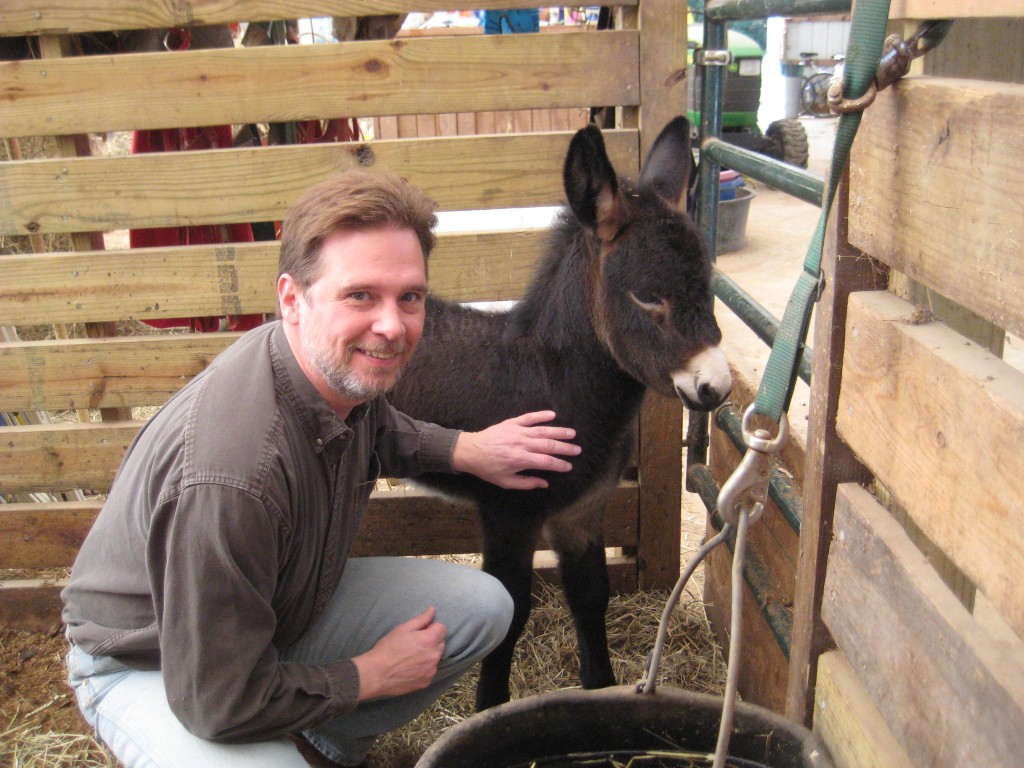The title of this post may seem as if I’m about to reveal some connection between the laminitic horse and a common vegetable, and, in a weird sort of way, that’s correct. But it’s not what you think…
Some months back, one of my clients took on the care of a very sweet donkey who had been used as a guard donkey for a herd of sheep. It turned out she wasn’t especially good at her job, which may, in part, have been due to the moderately severe laminitis she presented with. At any rate, once she’d moved to my client’s farm, she began to improve with dietary changes and proper hoof care, and was moving about reasonably well. But it wasn’t the usual degree of improvement I’m used to seeing in these cases, which continued to puzzle me. And then, a couple of weeks ago, we found out about the Pumpkin situation. And here’s Pumpkin!
Obviously, the jenny was bred, but none of us were aware of it until just a few days before she delivered. And what a sweet little girl Pumpkin is! She’s the friendliest and most laid-back equid baby I’ve ever encountered.
And this was the missing piece of her mom’s laminitis puzzle. You see, laminitis is caused by stress, and stress comes in many different forms. Although laminitis is most commonly caused by a horse rapidly ingesting a high number of carbohydrates, other physical stressors that can trigger a laminitic episode include illness and pregnancy. But that’s not the extent of it, because stress isn’t always physical. As I’ve learned from Dr. Bruce Nock, founder of Liberated Horsemanship and expert on the science of human and animal stress, the body responds to physical and psychological stresses in exactly the same way. So, ultimately, it may not matter whether you’re ill, or your child is ill and you’re worried about him/her – the effects on your body could be identical. Bruce illustrates this point with horses by describing a situation in which a large number of them in a single herd had been laminitic for a long period of time. After finding none of the usual dietary problems that would account for the situation, he realized the horses were being fed as a group in a relatively small outside area, and conjectured the competition for food was causing large amounts of psychological stress on the animals. And, sure enough, after the owner began scattering the hay around the pasture rather than feeding in a common location, the laminitis disappeared!
In Pumpkin’s mother’s case, it now seems obvious that the combination of stresses from both her former diet and her pregnancy were sufficient to bring about the laminitis, and although resolving the former led to significant improvement, the progression of her pregnancy continued to keep her in a less-than-optimal state. But following the arrival of Pumpkin, she’s made rapid improvement in both quality of hoof growth and comfort in movement.
So the next time you encounter a laminitic horse (or donkey!), remember: laminitis is caused by stress, and stress has many names. And while it’s important to consider the obvious causes, don’t rule out any possibility. Because things are not always as they seem!
